Menu
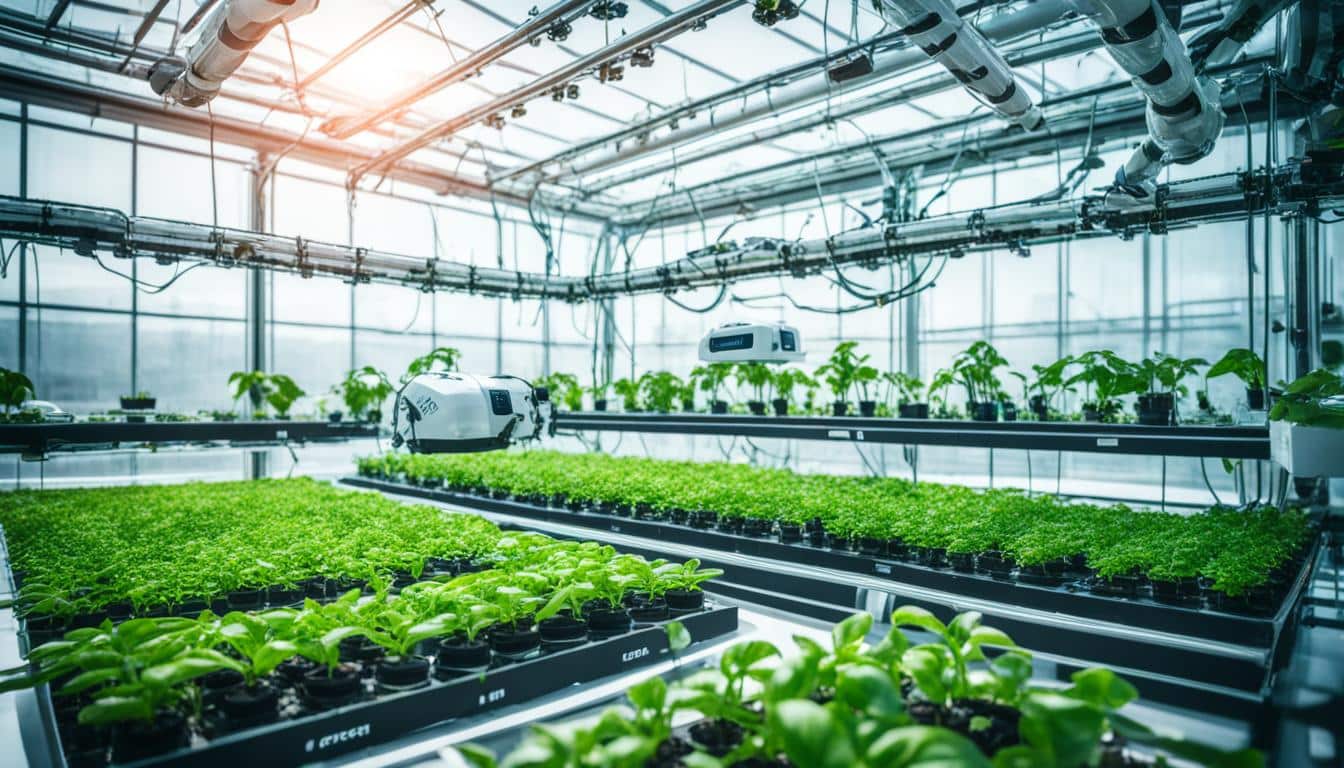
Did you know the agritech market is set to hit over US $41 billion by 2027? This growth shows how much we need new ways to farm because of more people and changing weather. Companies like FMC Corporation and AgroSpheres lead the way by using new tech in farming with the latest in farming practices.
FMC and AgroSpheres are working together for several years now. Their goal is to make new farming products that help farmers do better. FMC brings their knowledge in protecting crops, while AgroSpheres adds their plant-friendly tech. Together, they plan to change how we grow food for the better.
What’s great about FMC is they love pushing for new ideas and a better planet. Their work with partners is helping solve today’s farm problems and setting new paths for farm tech in the future. This mix of smart people and the latest farm tech will be key in the challenging farm world of tomorrow.
Biotechnology is quickly changing how we farm today. It’s led to new ways to make crops stronger against diseases and more productive. Companies like Indigo Agriculture and Benson Hill show us how these advances help both farming and making sure we all have enough food.
Biotech helps us make disease-resistant strains of crops. For example, many crops in the U.S. in 2012 were genetically modified. This lets the plants grow better and fight off diseases naturally. These improvements are a big step towards better and more reliable farming.
Keeping our plants safe is crucial for our environment and food supply. There are strict rules in place, such as those in the U.S. since 1986, to make sure biotech farming is safe. These rules help us protect our land and water while still growing more food. They make farming better for the planet and for us.
One big goal of biotech farming is to make more food from the same land. Thanks to new research, we’re getting more crops without using more space. The U.S. Department of Agriculture has also been helping farmers to use these new methods. This has meant more food being grown and sent around the world.
Sustainable farming works best when everyone chips in. Farmers, companies, and governments all work together. By combining knowledge and resources, they help create greener and stronger farms.
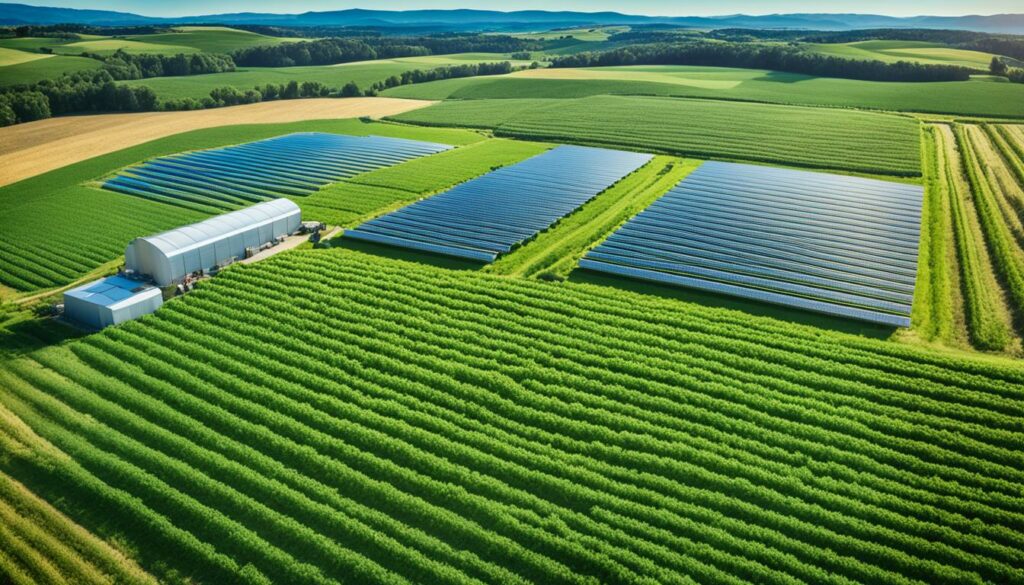
Coming together is key for greener and smarter farming. Groups like public-private partnerships bring different players to the table. This includes government bodies, charities, and businesses. Such teamwork is crucial for making rules that support sustainable farming.
“Public and private sector collaboration is essential to address the challenges of sustainable agriculture and to drive green innovation.” – Dr. Paul S. Teng
Many initiatives have already shown the power of teamwork. For example, the African Cashew Initiative and the Sustainable Rice Platform have done great things for the planet and the economy. They have made big improvements in agriculture this way.
These projects are great examples of what we can do together. They show that when we join forces, the impact can be huge. Businesses joining such efforts reach their eco-goals and help farming become more sustainable all around.
Agri-tech alliances are changing how we do research in agriculture. They use shared knowledge and tools to come up with new ideas. These partnerships help create new technology for farming that makes things better and greener.
Working together in agriculture is now very important. A good example is Bayer and Ginkgo Bioworks. They work on new ways to protect crops and make natural products for farms.
Microsoft’s ‘farm of the future’ project also helps farmers keep an eye on their land all year. These examples show that when people work together in farming, they can find really smart solutions.
Agri-tech groups are bringing in new technology to help with farm decisions. For instance, Syngenta’s LIVINGRO and AgritechGEO by DISAGRO are helping to make food safer and improve the soil. This is really important with more and more people needing food.
Buying farm supplies is also getting better because of the internet. IoT and AI are making it easier to manage farms. Companies like INTENT are using AI to help make farms more productive and not harm the planet.
Now, it’s easier for farms to see how they’re doing and improve. This is thanks to things like BeCrop Rate and Soiltech Wireless. These tools make farming more advanced and better for the planet.
| Company/Technology | Focus Area | Impact |
|---|---|---|
| Bayer and Ginkgo Bioworks | Crop protection and biological products | Innovative crop solutions |
| Microsoft’s ‘farm of the future’ | Monitoring farming aspects | Year-round farm monitoring |
| Syngenta’s LIVINGRO | Science-based farming decisions | Improved food production and soil quality |
| AgritechGEO by DISAGRO | Science-based farming services | Enhanced soil quality analysis |
| BeCrop Rate and Soiltech Wireless | Supply chain transparency | Efficient prediction and sustainability measurement |
Genetic modification joint ventures are crucial in today’s agriculture. They tackle environmental needs and satisfy the market. Companies join forces and share knowledge. This leads to great biotech breakthroughs. They improve plant traits like more nutrients and stronger resistance to pests and diseases.

A major study found GM crops boosted the economy globally from 1996 to 2012. They increased both income and the amount of crops grown. But, reaching the goal of doubling crop production by 2050 will be tough. It needs ongoing innovation. For example, the US now has genetically altered canola and glyphosate-resistant cotton. These changes have affected the types of weed that grow.
CRISPR technology has played a vital role in improving crops. It makes them better at surviving droughts and diseases. Companies like Indigo Agriculture and Benson Hill have led the way. They’ve raised millions of dollars to support their work.
These partnerships also use AI and data analysis to plan crops and fight pests better. Using biopesticides, made from plants, fungi, and bacteria, shows a move towards eco-friendly options.
Government support is a key player, offering money for research and to start new companies. Although these investments face challenges like protecting ideas and competition, their benefits are huge. Technologies such as GPS in farming equipment and drones with sensors have made farming more efficient and effective.
With genetic modification at their core, these partnerships push development in GM crops. They aim to ensure our future food systems are strong, can keep growing sustainably and can meet the world’s food needs.
Crop innovation partnerships are changing the world of farming. They bring together new solutions in agronomy and biotech crop growth. For example, the USDA’s NextGen program is a big step, putting $262.5 million towards training new food and farming experts. This shows the bright future of farming and how working together can lead to lasting crop improvements.
Since 2015, NASA and the USDA have joined forces. By doing things like sending young people to NASA Space Camp and creating Crop-CASMA, they’ve shown what’s possible in farming. Also, USDA’s NASS uses NASA’s soil data in updates about how crops are doing. This helps farmers make better decisions.
They’re also working together on biotech crops. For instance, USDA’s ARS and NASA are developing a special camera to check plant health in space. And NASA is also helping create crops that can survive tough weather. These efforts support farmers in using more sustainable methods for the future.
The push for more fertiliser is a key part of this work. With $52.6 million going towards 17 projects, and a goal to raise funding to $900 million by June 2023, this is making a big difference. There was a huge response, with over 350 companies applying. It proves there’s a real need for new ways to get better crops.
Here’s a quick look at some of the big investments and teamwork in crop innovation:
| Program | Investment/Initiatives |
|---|---|
| NextGen Program | $262.5 million to cultivate next-gen agriculture professionals |
| NASA & USDA Collaboration | 16 youths to Space Camp, Crop-CASMA development, climate-resilient systems |
| Fertilizer Production Expansion Program | $52.6 million in awards for 17 projects, upcoming $900 million funding |
Expanding insurance for planting crops twice a year is a clear win from crop innovation. It led to almost 1 million more insured acres in 2023. States like Illinois are seeing big boosts in winter wheat because of this. These changes show how working together in farming can overcome new challenges.
Looking at real-world case studies of farm technology partnerships shows big steps forward and real-life uses in farming. These changes make a difference in how we grow food.
The work between the Association for Vertical Farming (AVF) and GRAIN International sets a great example. They use up-to-date farm technology to encourage earth-friendly ways in farming. With vertical farming, they can save 70% water compared to old farming ways. This is very important in places where water is rare. Also, the whole world’s greenhouse industry benefits a lot. It’s worth about US $350 billion every year because of these new ideas.
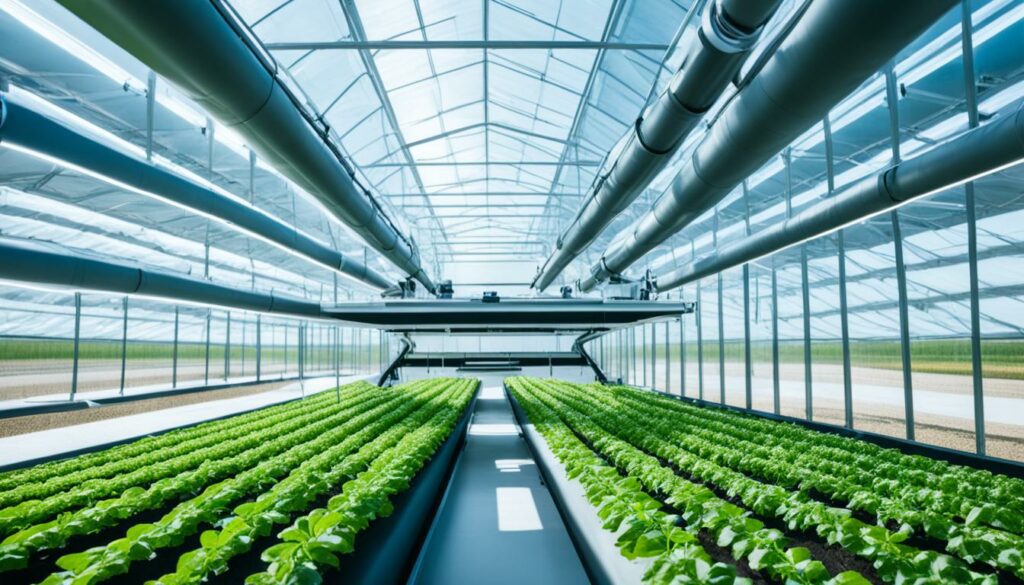
Farm tech partnerships really change the game in controlled environment agriculture. They use data and artificial intelligence to plan crops and fight pests better. Plus, using blockchain helps keep track of food better and stops fraud, tackling some food system problems. In a field that’s always moving, putting money into new ideas is crucial. For example, Indigo Agriculture got $360 million in 2023. Benson Hill got $150 million in 2022. This money pushes forward in areas like making crops that can fight disease and making farming more efficient overall.
Also, groups with government help and start-up money for biotech boost these teamwork efforts. Their focus on controlled farming strengthens indoor farm practices and makes buyers trust food that’s grown in smart ways. By mixing advanced tech with new farming, these teams help us meet food needs in the future while keeping the environment safe.
More and more, we see biotechnology mixing with farming to create biotech farming advantages. These partnerships have their challenges, though. Understanding these challenges helps us see the upsides and deal with the downsides of working together.
In biotech farming, teaming up means combining resources to solve big problems. Expertise and money come together to address issues in farming. Genetically engineered crops, for example, are grown in 29 countries. Another 42 countries buy and use them. This shows just how powerful these partnerships can be.
However, challenges exist in biotech farming. Managing who owns what, and making sure everyone’s goals match, can be tough. For instance, developing countries experiment most with GM crops but plant less than 2% of the world’s GM crops. This points to bigger issues needing solutions for these partnerships to thrive.
| Region | Countries Growing Biotech Crops |
|---|---|
| Latin America | 10 |
| Africa | 6 |
| North America | 2 |
| Europe | 2 |
| Asia | 9 |
Challenges in biotech collaborations touch on many areas. They include working through regulations, fairly spreading the benefits, and changing how the public sees it. Tackling these hurdles is key to making farming more sustainable. It also makes food systems stronger for our growing global population, set to hit nearly 10 billion by 2050.
Agricultural biotechnology has changed how we farm, making partnerships vital. These partnerships can be big or small, from across the globe to your local community. They all help make farming better and more sustainable.
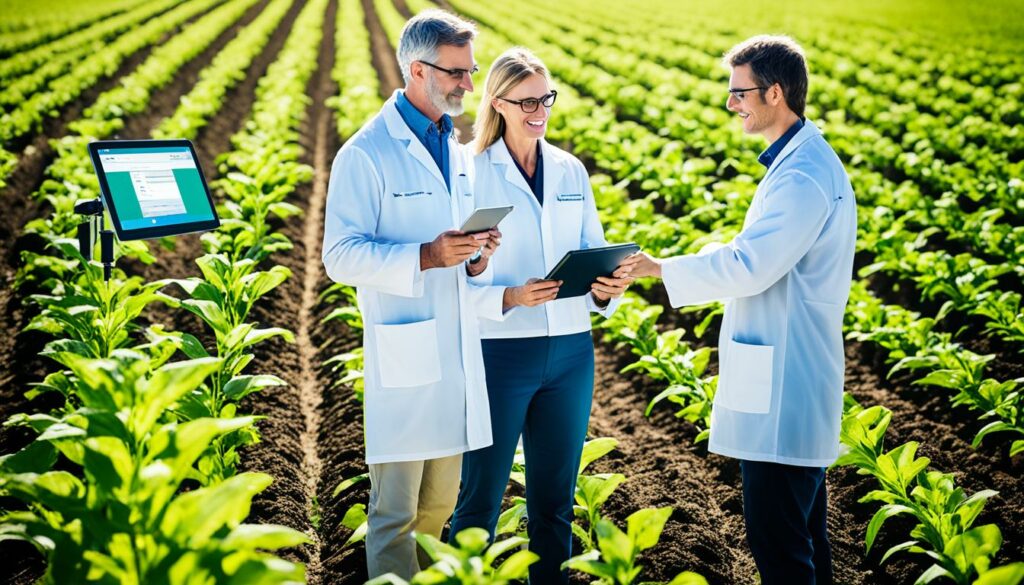
Agricultural biotech collaborations cover a wide range and many places. For example, North Carolina’s agriculture brings in nearly $100 billion a year. Over 750,000 people in the state work in this field.
North Carolina also has more than 195 ag tech companies, with big names like BASF Plant Science and Bayer. It shows its dedication with 18 research stations and two top agricultural universities. NCBiotech’s support through grants and loans, amounting to $24.6 million, proves their commitment.
Looking at successful collaborations in North Carolina shows their economic power. For each dollar spent on agriculture in the state, $121 and $283 are made back. This shows how farming collaborations benefit everyone.
North Carolina’s ag tech sector is extensive, covering 90 plant-focused companies, 32 animal-focused, and more. This variety supports many farming areas from growing better crops to caring for livestock.
| Category | Number of Companies | Notable Players |
|---|---|---|
| Plant-Focused | 90 | BASF Plant Science, Bayer |
| Animal-Focused | 32 | Corteva, DuPont Pioneer |
| Food-Related | 12 | Novozymes |
| Technology-Oriented | 26 | Syngenta |
| Support Companies | 36 | – |
Collaborations between key players fuel growth and innovation. They meet the need for better farming solutions as populations grow and eating habits change. Challenges like GMO safety and high research costs push for smarter partnerships, advancing agriculture together.
Agronomic research partnerships are key for pushing agricultural science further. They help in bringing new ideas to farming. By working together, scientists and farmers make sure their research brings real change to agriculture.
The International Wheat Yield Partnership (IWYP) got a big boost, $3.4 million, for creating better wheat types. Partnerships between countries, like the U.S.-Israel BARD and the NIFA AFRI, play a big role. They allow sharing of ideas and resources to solve farming’s big problems.
Big names in agricultural tech, Indigo Agriculture and Benson Hill, raised lots of money: $360 million and $150 million. This shows how intense the competition in agri-biotech is. To keep up, it needs constant innovations and strong partnerships in research and development.
These partnerships keep up with new rules and consumer trends. They make sure farms are sustainable for the future. Important collaborations, like that of Certis Biologicals and SDS Biotech, help make and sell solutions for farmers.
Global teams such as CGIAR and the Belmont Forum drive worldwide collaboration. Scientists from many countries come together through these efforts. They work on making better crops and managing soil. Their work leads to improvements in agriculture and helps in feeding the world while protecting the environment.
| Organisation | Funding | Objective |
|---|---|---|
| Indigo Agriculture | $360 million | Series F funding for biotech advancements |
| Benson Hill | $150 million | Series D funding for agricultural innovation |
| IWYP | USD 3.4 million | Development of new wheat varieties |
| U.S.-Israel BARD & AFRI | USD 4 million | Collaborative agricultural research projects |
| Certis Biologicals & SDS Biotech | Joint investment (details undisclosed) | Development and commercialisation of biological solutions |
Together, these partnerships are making big changes in agronomy. They’re pushing for more effective, sustainable, and productive farming all over the globe. Their combined efforts are leading to new breakthroughs in agricultural science and practices.
Artificial intelligence is playing a key role in the agritech industry. It’s changing farming by making it more efficient and precise. With the aim of feeding a growing population, AI is set to boost crop production. It’s forecasted that the AI in agriculture market will grow a lot by 2028, reaching USD 4.7 billion.
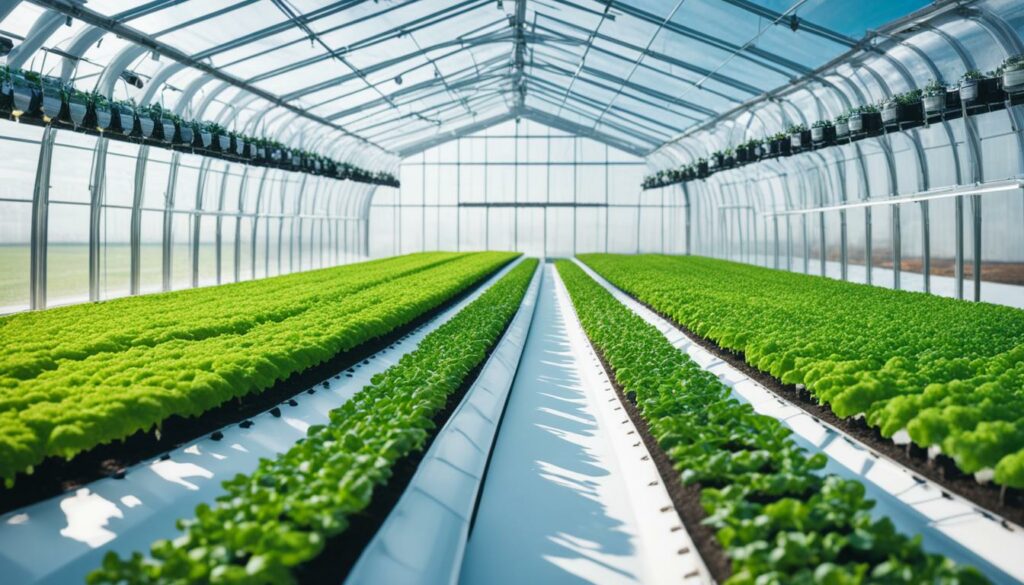
AI brings us smart crop planning, letting farmers use data to make better decisions. This leads to higher crop yields and less use of resources. With precision farming, AI makes it possible to grow more crops with less. This means more produce and less cost.
Automation is also improving, with machinery and drones working harder and more accurately than ever.
Predictive analytics are changing farming with AI, too. This tech lets farmers predict and tackle weather and soil challenges. AI can check soil health and suggest how to better use fertilisers to improve crop growth. It also helps farmers know how well the soil will support certain crops before planting. This way, farming can be planned smartly, and resources are used better.
All this tech is not just about increasing what we grow. It’s also making farming kinder to the planet. AI helps use resources better, makes crops healthier, and lowers harmful emissions. This way, it supports farming that looks after the environment while being productive.
The farming world is changing fast with new ways to protect crops from pests and diseases. Technological breakthroughs and better plant health products are making farming more sustainable. These changes are key in helping farmers grow more food reliably.
Organisations like Oerth Bio, backed by Bayer and Arvinas, are leading in biotech for pest management. Their PROTAC® molecules aim at pests without harming helpful bugs. This leads to greener ways of keeping crops safe.
The USDA is also helping by funding advanced farming projects. For example, the Fertilizer Production Expansion Program gave $52.6 million to 17 efforts. Due to its success, the programme’s funds grew to $900 million, with over $121 million going to 33 crop protection projects.
Keeping plants healthy is crucial for farming sustainably. More insurance for farmers and better planting methods are helping a lot. The USDA saw a big jump in demand for insurance for second crops, with a 43% area increase. This shows how such efforts are making a real difference.
Bayer’s huge investment in R&D, more than 5.3 billion euros, and support for over 50 companies shows their long-term plant health goals. They are dedicated to finding sustainable solutions for farming’s future success.
To sum up, modernising crop protection and plant health is essential. With the right technology and eco-friendly practices, we are working towards a stronger farming future.
The World Agri-Tech Innovation Summit unites the global agtech community. It focuses on agri-business start-ups and tech that supports sustainable farming. This summit is a key place for both new and old businesses to connect and work together.
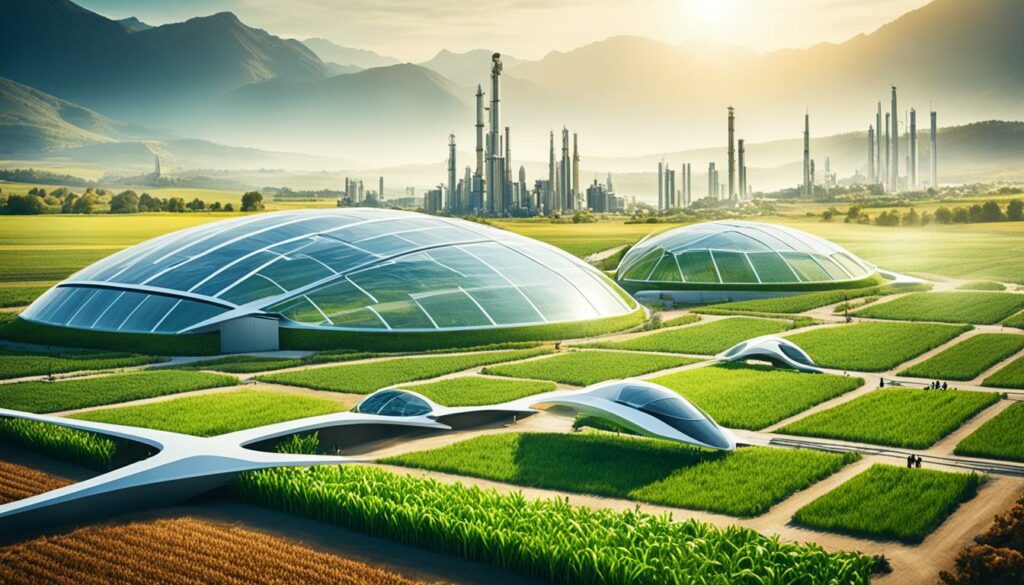
One standout agtech case study at the summit showed how offering lasting incentives can push for eco-friendly farming. Many key players agreed, saying it’s vital to match farming with climate aims. But, there’s a delay in widely using available tech for this.
The summit shed light on initiatives like the XPrize, which boost new ways to track eco-farming progress. Big parts of companies’ research budgets go into helping small, new agritech companies grow. This shows a strong push to better the field.
New tech revealed at the summit is speeding up work while using fewer resources. AI in farming is an area with big potential, even though it’s still growing. But as it develops, it must keep fair, respect privacy, and be clear.
The talk also touched on jobs and skills that’ll change because of these new technologies. By tackling these issues, the World Agri-Tech Innovation Summit helps farming stay strong and adaptable. It’s a great place for the latest in agri-tech, promoting teamwork, innovation, and tech that supports green farming.
Agritech partnerships are changing how we farm and protect the planet. They bring in big money. For instance, Indigo Agriculture got $360 million in 2023. Benson Hill got $150 million in 2022. This shows that the industry can make a lot and find new ways to grow. These deals help companies work together better. They make farming more competitive and efficient.
There are many good things about agritech working together. For example, in California, new farming methods cut water use by 20%. They also made crops 15% better. In the Midwest, how farmers plant seeds helped get 12% more corn.
Finding new ways to grow food also makes it safer and better for the planet. It means less harm to the environment. This has also made making new farm products faster. It opened new markets. Big companies and small startups work together to make this happen.
Making farming digital is popular because it helps farmers know things in real time. This makes farming more eco-friendly. By knowing the health of the soil and crops, farmers can predict their harvests better. They can protect their crops more easily.
Agritech helps farming in ways that are good for the Earth. For example, using technology to make stronger crops. This makes farming friendlier to the planet. It cuts the use of some harmful chemicals. New tools help farmers see if their crops need special care. This means there’s less need for strong chemicals to be spread everywhere.
An apple farm in Washington used a system that watches the soil. This made their apple crop grow by 10%. This shows how modern tools can help farmers do better. We should invest in these new farming methods. They make farms greener and ready for the future.
| Advantages | Statistics |
|---|---|
| Increased Crop Yields | Up to 70% improvement through advanced agritech |
| Reduced Irrigation Costs | 20% cost reduction with precision irrigation |
| Enhanced Production | 10% increase in apple production using automated nutrient systems |
| Enhanced Crop Health | Use of genetic editing tools for disease resistance |
Agritech isn’t just about more money or being green. It’s about both. It shows how farming can grow and be kind to the Earth at the same time.
In thinking about the future of agritech, biotech farming partnerships stand out. They are a hub of new ideas and help our planet. These partnerships also focus on building trust and being open with others.
In places that need help the most, such as developing countries, these new farming methods could really make a difference. For example, in Africa, there are special crops that could greatly improve food security. Making sure this technology is not just for big companies but also for small farmers is key.
Leaders in these countries find it tough to prioritize research due to limited resources. But almost everyone agrees that trust is key. Over 80 stakeholders from African projects stress the importance of being honest and working closely together.
Moving ahead, having a clear goal together is critical. This helps in creating strong and lasting farm partnerships. These partnerships need to include everyone – from businesses to governments to the public.
With more people around the world and many environmental challenges, biotechnology in farming is vital. Working together strongly, we can create a farming future that is good for everyone and our planet.
Biotech farming is joining high-tech tools with farming know-how. It’s making crops stronger and able to fight disease. This helps meet more people’s food needs and deal with a changing climate.
Biotechnology creates crops that can survive tough conditions and diseases. This boosts our food safety. It also aims to make crops more resistant and productive, protecting our natural world too.
The Association for Vertical Farming (AVF) and GRAIN International show how well collaboration works. They’re making farming greener and safer. This work also helps make sure there’s enough food for everyone.
Agri-tech alliances pull together top minds and resources. They come up with new farming tools and techniques. This boosts farm output and protects the environment for the future.
Genetic modification joint ventures team up to create special crops. These crops might be healthier or fight off pests better. Their work is key for making sure we have enough food in the future.
Crop innovation groups are changing farming for the better. They’re making crops that grow well in new places. These efforts are important for keeping us fed and the planet healthy.
The work of AVF and GRAIN International has made indoor farming safer and greener. They’ve set new standards and made people more confident in eco-friendly products.
Biotech farming brings many minds and skills together. It can make farming smarter and more eco-friendly. But managing who owns the ideas and getting everyone to agree can be tough.
From big partnerships between countries to local efforts, they’re all helping. They turn science into ways to grow food better and keep the planet healthy. Together, they’re making a big difference across the world.
Agronomic research teams are always making farming better. They mix new science with real farm work. This means we get better crops, look after the soil, and farm in ways that last.
Artificial intelligence is big news in farming tech. It helps plan crops and predicts what will happen. This makes farming smarter, reduces risks, and improves the way we grow food.
There are new ways to protect crops, like making plants bug-resistant and using eco-friendly pest control. These methods keep crops healthier and stronger, so they can fight off pests and diseases better.
The World Agri-Tech Innovation Summit is where the latest farming ideas and tech get a spotlight. It helps new businesses grow and it’s where people who care about farming meet to share and learn. It’s key for turning new tech and ideas into real ways to farm better.
Agritech groups make farming more efficient and competitive. They also help it do less harm to the planet. This shows that doing well in business and looking after the earth can work together.